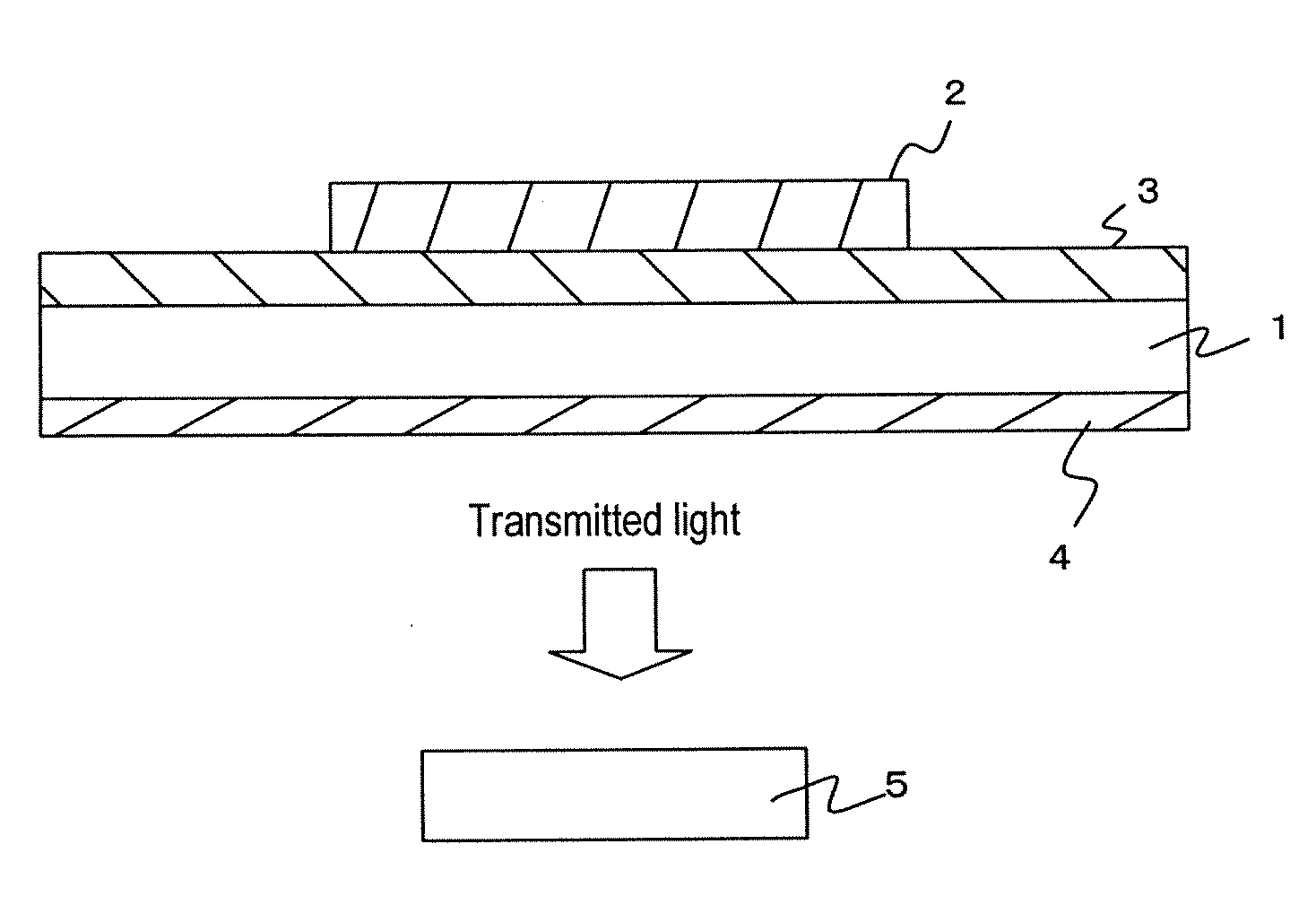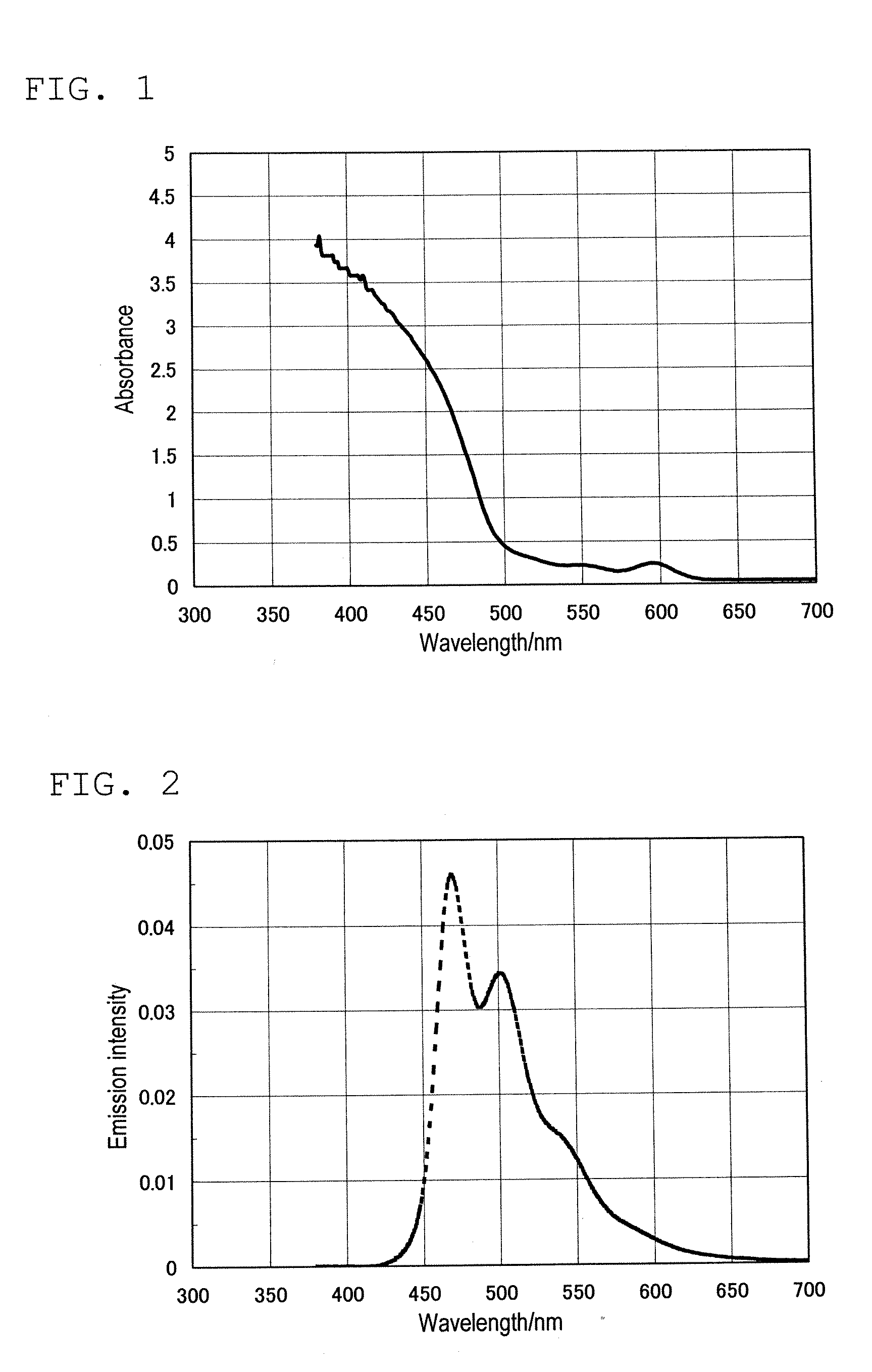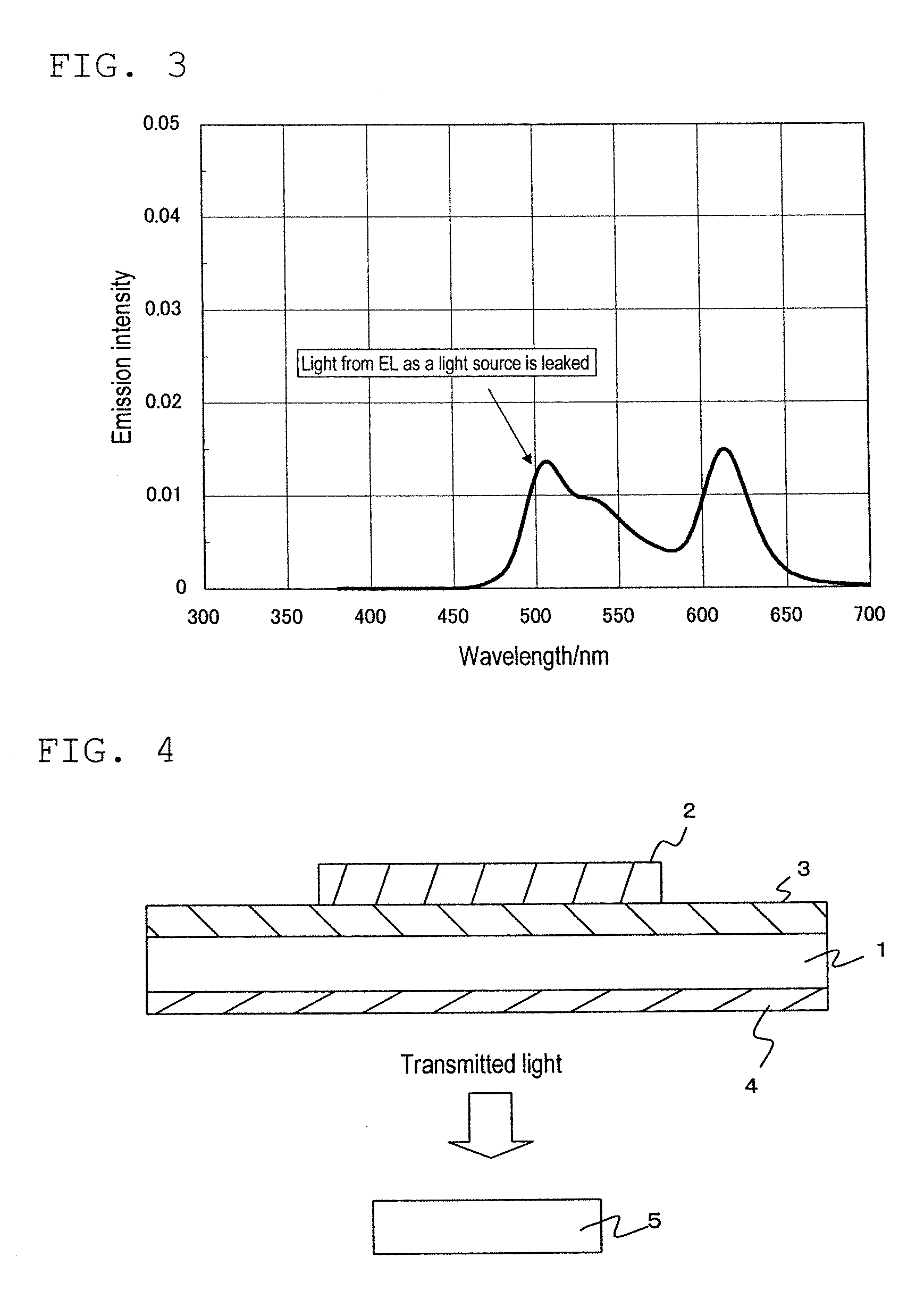Color converting material composition and color converting medium including same
a technology of color converting material and composition, which is applied in the direction of luminescent compositions, discharge tubes/lamp details, discharge tubes luminescent screens, etc., can solve the problems of deteriorating purity of displayed light, fluorescent semiconductor nanocrystals that cannot absorb organic el elements in sufficient quantities, and deteriorating purity of converted light. , to achieve the effect of reducing mechanical stability of the emitting apparatus, reducing conversion capability and reducing light outcoupling efficiency
- Summary
- Abstract
- Description
- Claims
- Application Information
AI Technical Summary
Benefits of technology
Problems solved by technology
Method used
Image
Examples
synthesis example 1
[0101](1) 0.5 g of cadmium acetate dihydrate and 1.6 g of tetradecylphosphonic acid (TDPA) were added to 5 ml of trioctylphosphine (TOP). The resulting solution was heated to 230° C. and stirred for one hour in a nitrogen atmosphere. After cooling the solution to 60° C., 2 ml of a TOP solution containing 0.2 g of selenium was added to the solution to obtain a raw material solution.
[0102]10 g of trioctylphosphine oxide (TOPO) was placed in a three-necked flask and dried at 195° C. for one hour under vacuum. After setting the pressure inside the flask at atmospheric pressure using nitrogen gas, the TOPO was heated to 270° C. in a nitrogen atmosphere. 1.5 ml of the above raw material solution was added to the TOPO while stirring the system to allow a reaction to initiate.
[0103]The reaction was continued while confirming the growth of the nanocrystal. When the particle size of the nanocrystal became a desired size, the reaction solution was cooled to 60° C. to terminate the reaction.
[01...
synthesis example 2
Synthesis of ZnTe / ZnSe Semiconductor Nanocrystal
[0107]The ZnTe / ZnSe semiconductor nanocrystal was synthesized with reference to JP-T-2003-505330. Specifically, TOPO (40 g) and myristic acid (0.1 g) were placed in a four-necked flask and dried at 180° C. for two hours under reduced pressure. After setting the pressure inside the flask at atmospheric pressure using nitrogen gas, a zinc acetate / TOP solution which had been prepared separately (8.5 ml, containing 0.3 g of zinc acetate) and heated to 100° C. was added. The resulting mixture was heated to 330° C.
[0108]A tellurium / hexapropylphosphorous triamide / TOP solution (1.5 ml, containing 0.3 g of tellurium) was poured into the above four-necked flask, and the resulting mixture was stirred at 280° C. for 2 hours.
[0109]The reaction solution was cooled to 150° C. A diethyl zinc / bis(trimethylsilyl)selenide / TOP solution (10 ml, containing 0.14 g of diethyl zinc, 0.25 g of bis(trimethylsilyl)selenide)) was added dropwise over a period of on...
synthesis example 3
Synthesis of Inp / Znse Semiconductor Nanocrystal
[0112]TOPO (4 g) and TOP (36 g) was placed in a four-necked flask and dried at 100° C. for two hours under reduced pressure. After setting the pressure inside the flask at atmospheric pressure using nitrogen gas, an indium acetate / TOPO / TOP solution which had been prepared separately (6.4 ml, containing 0.34 g of indium acetate, the TOPO / TOP amount ratio was the same as in the flask) and heated to 100° C. was added. The resulting mixture was heated to 310° C.
[0113]A hexapropylphosphorous triamide / TOP solution (4.4 ml, containing 0.32 g of hexaethylphosphorous triamide) was added to the above four-necked flask, and the resulting mixture was stirred at 310° C. for 2 hours.
[0114]The reaction solution was cooled to 150° C. A diethyl zinc / bis(trimethylsilyl)selenide / TOP solution (10 ml, containing 0.14 g of diethyl zinc, 0.25 g of bis(trimethylsilyl)selenide)) was added dropwise over a period of one hour. After completion of the dropwise addi...
PUM
 Login to View More
Login to View More Abstract
Description
Claims
Application Information
 Login to View More
Login to View More - R&D
- Intellectual Property
- Life Sciences
- Materials
- Tech Scout
- Unparalleled Data Quality
- Higher Quality Content
- 60% Fewer Hallucinations
Browse by: Latest US Patents, China's latest patents, Technical Efficacy Thesaurus, Application Domain, Technology Topic, Popular Technical Reports.
© 2025 PatSnap. All rights reserved.Legal|Privacy policy|Modern Slavery Act Transparency Statement|Sitemap|About US| Contact US: help@patsnap.com



